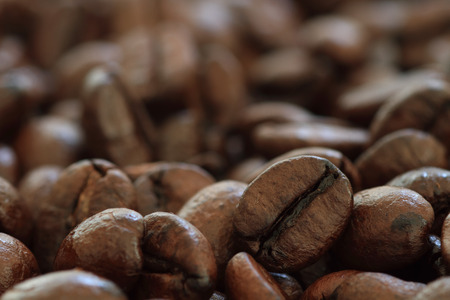Introduction to Coffee Lexicon in the UK
When discussing coffee in Britain, the conversation often veers toward familiar descriptors like “fruity” and “nutty.” Yet, beneath these accessible terms lies a rich and evolving lexicon, shaped by the UK’s distinct cultural history and its rapidly maturing speciality coffee scene. While global influences have undeniably played a role, the terminology used to describe coffee flavours in the UK reflects not only international standards but also uniquely British preferences, sensibilities, and even climate.
The evolution of coffee tasting language in the UK can be traced back to early encounters with continental European café culture, through to the third wave coffee movement that has swept cities like London, Edinburgh, and Manchester. This journey has fostered a nuanced vocabulary, enabling baristas, roasters, and enthusiasts alike to articulate subtle differences in aroma, acidity, body, and finish. With increased exposure to diverse origins and processing methods, British coffee professionals have refined their palate—and their language—moving far beyond basic flavour notes.
This article sets the stage for a deeper understanding of how tasting descriptors have developed within the UK context. It explores how historical trends, local palate preferences, and a passion for provenance have converged to create a distinctly British approach to describing coffee. As we delve further into this lexicon, we will uncover not just what is said about coffee here—but why these words matter for both producers and consumers on these isles.
2. Decoding British Palate Preferences
The British approach to coffee tasting is shaped by a unique interplay of heritage, climate, and longstanding consumption habits, resulting in a distinct palate that often diverges from global trends. While the UK’s historical association with tea has long influenced its national taste profile—favouring subtlety, balance, and a certain level of comfort—modern British coffee appreciation is equally informed by multiculturalism and evolving café culture.
Influence of Local Heritage
British coffee drinkers typically gravitate towards flavour notes that evoke familiarity and nostalgia. Traditional references such as “malty,” “biscuit-like,” or “toasty” are frequently used, reflecting the influence of classic British treats and baked goods. There is a tendency to seek out rounded, mellow profiles rather than extremes in acidity or bitterness, mirroring the national preference for moderation in taste experiences.
Climate Considerations
The UK’s cool and often damp climate also plays a role in shaping local preferences. Coffees with a comforting body, pronounced sweetness, or warming spice notes (think cinnamon, clove, or nutmeg) are especially appreciated during colder months. These characteristics provide both physical and emotional warmth, aligning with broader cultural tendencies towards cosiness and comfort.
Consumption Habits: A Comparative Table
| Aspect | Typical UK Preference | Continental Europe | North America |
|---|---|---|---|
| Body & Mouthfeel | Smooth, medium-bodied | Lighter-bodied (Nordic) | Heavier-bodied (US diner style) |
| Acidity | Mild to moderate acidity | High acidity favoured in specialty scenes | Balanced to low acidity preferred in mainstream markets |
| Flavour References | Biscuit, malt, chocolate, dried fruits | Citrus, floral, berry notes | Nuts, caramel, cocoa, vanilla |
| Preferred Brew Methods | Flat white, cafetière (French press), filter coffee | Espresso-based drinks dominate | Drip/filter coffee most common |
The Distinctiveness of the British Palate
This nuanced approach means that descriptors like “fruity” or “nutty” are often not specific enough for the British market. Instead, there is greater emphasis on layered complexity (“praline,” “raisin,” “toasted oat”) and an appreciation for coffees that pair seamlessly with milk—an echo of the country’s rich tea tradition. Ultimately, understanding these subtleties is crucial for anyone seeking to communicate coffee flavour effectively within the UK context.

3. Beyond Fruity and Nutty: Expanding Vocabulary
While ‘fruity’ and ‘nutty’ are ubiquitous starting points in coffee tasting, the UK’s sophisticated palate demands a richer lexicon. British coffee professionals and enthusiasts increasingly draw from their own culinary heritage to describe complex flavour notes with greater precision and nuance. Rather than settling for broad strokes, they reference familiar, culturally resonant flavours that speak directly to the British experience.
Bramble: A Distinctive British Fruit Note
The term ‘bramble’ is often used in UK tasting sessions to evoke the layered tartness of wild blackberries—a common hedgerow fruit across Britain. When a coffee exhibits juicy acidity balanced by subtle earthy undertones, describing it as having a ‘bramble’ note instantly conjures memories of late summer foraging or classic British desserts like bramble crumble. This specificity helps bridge the gap between abstract coffee tasting and everyday taste experiences familiar to many Brits.
Biscuit: Comforting Familiarity
Describing a coffee as ‘biscuit-like’ taps into the nation’s affection for teatime treats such as digestives, rich tea, or shortbread. This descriptor goes beyond generic sweetness or graininess; it pinpoints a comforting, buttery, sometimes malty undertone reminiscent of freshly baked biscuits. Such references resonate deeply with local drinkers, allowing them to connect their sensory impressions to cherished rituals and childhood nostalgia.
Marmalade: A Zesty Classic
‘Marmalade’ is another uniquely British descriptor that has found its way into specialty coffee vocabulary. Used to capture bright citrus notes—often with a bittersweet edge—it immediately brings to mind the iconic breakfast preserve made from Seville oranges. Referencing marmalade in tasting notes not only signals citrus complexity but also invokes the British penchant for bold, tangy flavours balanced by sweetness, making it a powerful tool for communicating both flavour and cultural identity.
Building a Culturally Relevant Lexicon
By embracing these locally meaningful descriptors—whether bramble, biscuit, marmalade, or countless others—UK coffee professionals refine their sensory language while forging deeper connections with their audience. The result is a more evocative and relatable tasting experience that transcends generic terms, celebrating both the diversity of specialty coffee and the richness of Britain’s culinary heritage.
4. Practical Application: Cupping Sessions and Tasting Notes
In the context of British speciality coffee, the use of an enriched tasting vocabulary extends far beyond marketing. It is an essential tool within professional environments, shaping everything from rigorous cupping protocols to effective staff training and customer engagement in retail settings. By moving past generic descriptors like “fruity” or “nutty,” UK coffee professionals can elevate both product understanding and communication standards.
Cupping Protocols in the UK: Elevating Standards
Cupping sessions are foundational in assessing coffee quality and identifying unique characteristics. In the UK, many roasteries and cafes follow protocols set by the Specialty Coffee Association (SCA), yet adapt terminology to reflect local preferences and consumer expectations. Enhanced vocabulary enables more precise articulation of flavour notes, distinguishing between subtle fruit profiles—think “blackcurrant” vs. “dried cherry”—and nuanced nut flavours such as “hazelnut praline” or “toasted almond.” This detailed approach not only supports quality control but also fosters a shared language among professionals.
Staff Training: Empowering Teams with Language
For baristas and retail staff, a robust tasting lexicon is central to delivering exceptional service. Training modules now routinely include sensory workshops where staff calibrate palates using comparative tastings and guided discussions. These sessions encourage team members to move beyond broad terms, developing confidence in describing complex aromas—whether referencing “bergamot zest,” “molasses sweetness,” or “malty undertones.” The table below outlines typical components of a UK-based sensory training session:
| Training Component | Description |
|---|---|
| Flavour Calibration | Tasting standardised references (e.g., specific fruits, nuts) to align perception across team |
| Vocabulary Development | Exercises in expanding descriptive terms using local food references (e.g., Bakewell tart, marmalade) |
| Tasting Note Practice | Writing mock notes using detailed language for peer review |
| Customer Interaction Scenarios | Role-playing recommendations based on refined tasting notes |
Retail Communication: Engaging the British Consumer
On the shop floor, effective communication of tasting notes can transform customer experience. British consumers increasingly seek both authenticity and education; thus, menus and packaging often feature tasting notes that go well beyond international norms. For example, instead of simply listing “nutty,” a label might specify “pecan pie with hints of treacle.” Staff are trained to elaborate on these notes conversationally, drawing on familiar cultural references—from “Eton Mess acidity” to “Yorkshire parkin spiciness”—bridging the gap between specialty jargon and everyday taste memory.
Summary Table: Applications of Enhanced Tasting Vocabulary
| Setting | Application Example |
|---|---|
| Cupping Sessions | Identifying micro-lot distinctions (“red apple brightness” vs. “rhubarb tang”) |
| Staff Training | Sensory alignment through comparative tastings with local produce analogies |
| Retail Communication | Menu descriptions referencing British culinary icons for relatability |
The Professional Payoff
The integration of advanced tasting terminology enhances every stage of the coffee journey in the UK—from sourcing and roasting to brewing and serving. By embedding this language into daily practice, British coffee professionals create a more informed workforce and a richer, more engaging experience for customers—ultimately contributing to the elevation of UK coffee culture as a whole.
5. Challenges and Misconceptions
Despite the growing sophistication of coffee culture in the UK, several challenges persist when it comes to accurately describing flavour profiles. One of the most common pitfalls is over-simplification. Describing a coffee simply as fruity or nutty may serve as a starting point for casual drinkers, but this reductionist approach does little justice to the nuanced spectrum of flavours present in specialty beans. Such simplification can inadvertently reinforce stereotypes and limit consumers’ willingness to explore beyond familiar taste notes.
Translation Issues: Global Versus UK-specific Terms
Another significant challenge lies in the translation of global coffee terminology into language that resonates with UK audiences. Flavour descriptors popularised by international organisations or roasters—for example, ‘blueberry’ or ‘passionfruit’—may not always connect with British palates, where references like ‘blackcurrant’, ‘gooseberry’, or even ‘sultana’ might be more evocative and contextually relevant. This misalignment can hinder effective communication between producers, roasters, and consumers, ultimately affecting appreciation and understanding of a coffee’s true character.
The Risk of ‘Coffee Jargon’
As the UK specialty scene grows, so does the risk of alienating newcomers through excessive use of coffee jargon. Technical terms such as ‘terroir-driven acidity’, ‘phenolic compounds’, or even referencing processing methods like ‘anaerobic fermentation’ may be meaningful within professional circles, but they can create barriers for those just beginning their journey into specialty coffee. Striking a balance between technical accuracy and accessibility remains a core challenge for educators, baristas, and roasters alike.
Navigating Towards Clarity
Ultimately, overcoming these challenges requires a conscious effort to contextualise tasting terms for local audiences, encourage curiosity rather than exclusivity, and foster transparent dialogue across all levels of the coffee chain. By addressing misconceptions head-on and refining our collective vocabulary, the UK’s coffee community can ensure that tasting terminology evolves in a way that welcomes all enthusiasts—regardless of their experience or background.
6. Innovative Approaches and Future Trends
The UK’s coffee scene is in a state of exciting transformation, with innovation driving the evolution of tasting terminology far beyond traditional descriptors. A notable development is the increasing collaboration between speciality coffee roasters and acclaimed local chefs. By merging culinary artistry with expert roasting techniques, these partnerships are unlocking new dimensions of sensory analysis—think tasting notes inspired by seasonal British produce or references to iconic regional dishes. For example, a washed Kenyan might now be described as evoking “Yorkshire rhubarb crumble” rather than the generic ‘fruity’.
Looking ahead, we can expect UK-specific vocabulary to grow ever more nuanced and expressive. The influence of local terroir—from Scottish heather to Cornish sea air—is likely to appear in future lexicons, reflecting both provenance and cultural context. Coffee professionals are also beginning to incorporate terminology from other British beverage traditions: think “malty” reminiscent of a good ale, or “bramble” echoing gin botanicals. As consumers become more engaged, there’s potential for crowd-sourced descriptors that resonate with regional palates, further anchoring tasting notes in the everyday British experience.
Moreover, educational initiatives—such as guided tastings at farmer’s markets or sensory workshops hosted by independent cafés—are empowering drinkers to articulate what they taste in ways that feel authentic and locally relevant. Digital platforms and apps tailored to the UK market may soon allow real-time sharing and refinement of tasting terms, fostering a dynamic community dialogue around flavour discovery.
In summary, the future of coffee tasting language in the UK will be shaped by an interplay of tradition and innovation—celebrating national identity while pushing the boundaries of how we describe, appreciate, and connect over a cup of coffee.


